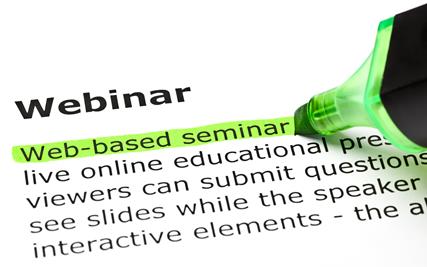Live sessions can be a fantastic channel for connecting with potential and existing clients and demonstrating your business’ expertise in a certain area. Technology has become more user friendly, and there are a host of platforms, such as Shindig, SlideShare, WebEx, Google Hangouts, AnyMeeting and OnWebinar.com, that enable individuals and companies to stage webinars or video chats for a large audience scattered across different locations.
If you are very familiar with a particular subject and feel that your target audience would benefit from a tutorial, consider setting up a webinar or video chat. This typically takes the form of a live presentation accompanied by a slideshow or infographics that illustrate the main points. Visuals are an important component in keeping people engaged and in illustrating your ideas. Some webinars include several presenters, while others only have one. Some live chats strive to be interactive with the participants, while others are more focused on one presenter. Think about the shape you would like your session to take, and plan accordingly.
Build up excitement for the event
In the weeks leading up to your session, it’s important to prepare your audience in stages. Send out an initial sign-up email to your contact list that provides details of what will be covered during the webinar and offers a strong argument for why the material will be relevant and helpful to them. One week later, send a follow-up message to those who did not respond to decline or reserve a spot, reminding them of the offer. Once you have collected your final list of attendees, send a reminder two days prior to the event. On the day of the webinar, email a link and any useful instructions to those who are attending.
Don’t leave your audience in the dark
As indicated above, you cannot expect prospects to sign up for a webinar if they do not know what will be covered or how it will benefit them. Distribute an agenda and any supplemental materials with the reminder email, so attendees can review the subject matter and compile any questions they may have. Depending on the format of the event, you may end with a Q&A session or have a chatroom discussion between attendees and speakers after the presentation.
While the content of the webinar is extremely important, don’t neglect the mechanical details either. Small issues such as poor sound quality or a lag between what appears on the screen and what the presenter is saying can be extremely annoying for an audience and gets in the way of the overarching message. Make sure the value of what you say is not drowned out by problems that stem from a lack of attention to detail. Schedule time in advance to make sure everything will run smoothly.
